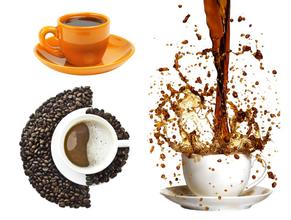Introduction to the description of the producing area characteristics and Flavor of the Coffee Coffee treated by Wahana Manor in Indonesia
Introduction to the description of the producing area characteristics and Flavor of the Coffee Coffee treated by Wahana Manor in Indonesia
The processing process and Sumatran characteristics. I describe these treatments in such detail because it is not clear how the soil and atmosphere and the unusual treatment techniques and the three-stage drying each affect the formation of the characteristics of Lindong and Manning coffee. Only one thing is certain. These treatments occasionally produce excellent coffee and are extremely unstable. Only by the merciless selection in the Medan port exporters' warehouse can we ensure that the deep texture and unique and low-key richness of Lintong Lindong and Mandheling Mantenin can emerge from the interference of other smells. Sellers often mark Lintong Lindong and Mandheling Manning coffee as dry. In fact, the pulp and coffee seeds are often separated by a variety of mixing modes, and the more common is a backyard wet treatment. The smart farmer put the freshly picked coffee cherries into a simple peeling machine made of scrap metal, wood and bicycle parts. Then put the peeled sticky beans in a plastic woven bag to ferment overnight. The next morning the soft pulp and slime that had been fermented were manually washed away. The silver-coated coffee is pre-dried on a sheet in the front yard and sent to the middleman's warehouse to remove the silver skin and further dry. Finally, the coffee was trucked to Port Medan in Medan, the capital of Sumatra, for the third and final drying. It is also reported that in other Mandheling Mantenin producing areas, after peeling, the sticky material is allowed to dry and attach to the beans, just like the semi-washing treatment in Brazil. Then use a machine to remove the sun-dried sticky and silver skin. Finally, it goes through the same two-stage drying, first in the middleman's warehouse and then in the exporter's warehouse in Port Medan, Medan.
Producing area: Wahana Manor, Indonesia
Harvest time: October to April
Grade division: G1
Variety: Rasuna
Planting height: 1250 m ~ 1300 m
Processing method: solarization
Packing specification: 30kg/ bag
Flavor characteristics: Strawberryjam, Black currant,Brownsugar,Cedar,Milkcocoa, Tropical fruit
Recommended baking degree
Unlike the water-washing and pressurized treatment commonly used in Indonesia, the coffee at WAHANA Manor is fully washed-using a new pulp removal machine. The machine, installed in 2009, can handle 25 tons of ripe coffee cherries per hour. Coffee cherries are picked when they are fully ripe, and processed raw coffee beans are sorted and graded by hand. In addition, WAHANA Manor is now promoting raw coffee beans treated in the sun. Like this one, 100%Rasuna Solar WAHANA Manor is still a relatively young estate that continues to grow year by year. The estate covers an area of 500 hectares. The owner of the estate plans to expand the coffee planting area of the estate as much as possible in the next few years. A large part of WAHANA Manor is a protected forest cover, which includes many native plant and tree species around valleys and rivers. Another 30 hectares of the estate is used for coffee breeding to increase the yield of individual coffee grown on a large area. The new seedlings will be cultivated in a sandy bed for 3 months and then transferred to a plastic bag for 7-8 months. After that, the coffee seedlings are planted in the divided planting area and carefully marked to identify the variety later.

Important Notice :
前街咖啡 FrontStreet Coffee has moved to new addredd:
FrontStreet Coffee Address: 315,Donghua East Road,GuangZhou
Tel:020 38364473
- Prev

Panamanian Esmeralda Manor Coffee Flavor description Grinding scale Variety production area introduction
Panamanian Esmeralda Manor Coffee Flavor description Grinding scale Variety producing area introduction 1931 unknown export from Geisha Mountain Mountain in southwestern Ethiopia (which happens to be synonymous with Japanese geisha) to Kenya, wandering to Tanzania and Costa Rica, and then transplanted to Panama in the 1960s, and then survived for nearly half a century before it became a blockbuster and defeated Chang.
- Next

Introduction to the Regional treatment method of Santa Rita Coffee Bean in Colombia
Columbia Santa Rita Coffee Bean Flavor characteristics Manor area treatment method for growing coffee also requires daylight and proper shade, which is most suitable for planting on fertile soil or volcanic ash soil. Therefore, the origin of coffee is widely distributed in South America, Central America, the West Indies, Asia, Africa, Arabia, the South Pacific and Oceania. Such as Ethiopia and Tanzania in Africa
Related
- Does Rose Summer choose Blue, Green or Red? Detailed explanation of Rose Summer Coffee plots and Classification in Panamanian Jade Manor
- What is the difference between the origin, producing area, processing plant, cooperative and manor of coffee beans?
- How fine does the espresso powder fit? how to grind the espresso?
- Sca coffee roasting degree color card coffee roasting degree 8 roasting color values what do you mean?
- The practice of lattes: how to make lattes at home
- Introduction to Indonesian Fine Coffee beans-- Java Coffee producing area of Indonesian Arabica Coffee
- How much will the flavor of light and medium roasted rose summer be expressed? What baking level is rose summer suitable for?
- Introduction to the characteristics of washing, sun-drying or wet-planing coffee commonly used in Mantenin, Indonesia
- Price characteristics of Arabica Coffee Bean Starbucks introduction to Manning Coffee Bean Taste producing area Variety Manor
- What is the authentic Yega flavor? What are the flavor characteristics of the really excellent Yejasuffi coffee beans?

